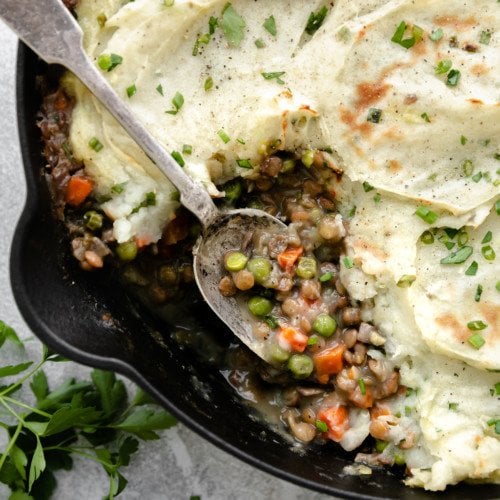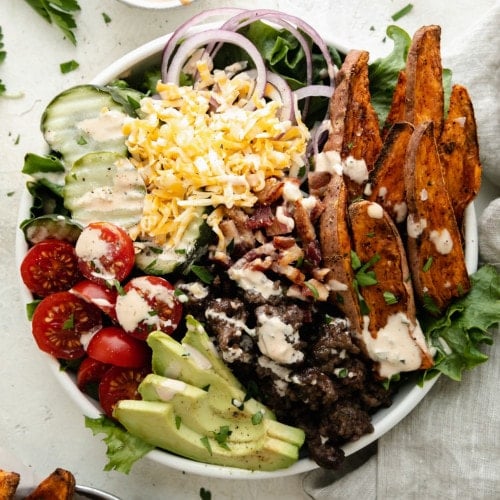The standard Whole30 program is a 30-day “reset” plan focused on eating whole, simple foods, such as meat, seafood, eggs, vegetables, fruits, natural fats, herbs, spices, and seasonings. For 30 days you eliminate added sugars and sweeteners, alcohol, grains, most legumes and beans, packaged and processed snacks and sweets, and foods with artificial additives and preservatives. Many people say that Whole30 has a strong emphasis on animal-based foods (meat, poultry, seafood, and animal-based fats), which is why a Plant-Based Whole30 program is different. Read on to learn more about the plant-based version of the Whole30 program.
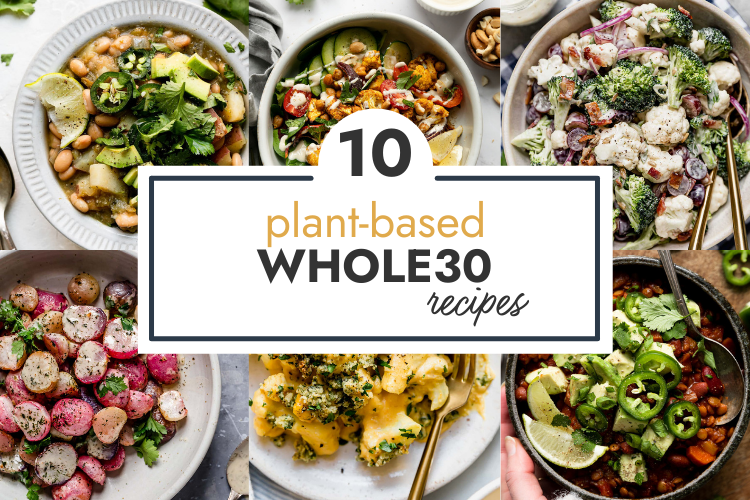
What is Plant-Based Whole30 or Whole 30 Vegetarian?
A plant-based Whole30 program emphasizes whole, simple foods, just like the original plan. However, for 30 days, you also eliminate any animal-based foods and fats, replacing them with whole-food sources of plant-based protein and plant-based fats. The program is set up in two phases: In phase one (the first 30 days), you eat plant-based protein sources, lots of vegetables and fruit, and natural plant-based fats. In phase two, which lasts for the next 6+ days, you reintroduce animal-based foods.

What is allowed on the Plant-Based Whole30 Program?
These food categories are allowed on the plant-based Whole30 program:
- Fruits – all types of fruits are allowed, including berries, citrus, apples, pears, avocado, apricots, peaches, bananas, mangos, and more
- Vegetables – enjoy all varieties of vegetables, from non-starchy options like carrots, celery, tomatoes, zucchini, and peppers, to starchy veggies like sweet potatoes, russet potatoes, beets, and butternut squash. Also enjoy mushrooms, asparagus, leafy greens, broccoli, cauliflower, and more
- Beans, legumes, lentils, and peas – while this category is eliminated from the standard Whole30 program, beans and legumes are nutritious starchy foods that are allowed on the Plant Based Whole30 program to supply plant-based protein and fiber
- Nuts and seeds – enjoy all types of nuts and seeds, as well as nut and seed butters that don’t have added sugars
- Natural plant-based fats – think plant-based fats, like olive oil, avocado oil, and coconut oil as your main fats
- Herbs, spices, and seasonings – use herbs, spices, and seasonings to amp up the flavor in foods
- Plant-based protein powders – seek out protein powders based on pea, hemp, pumpkin, and/or chia. And look for unsweetened versions, since you’re eliminating added sugars and natural or artificial sweeteners (see our Dietitian-Recommended Plant-Based Protein Powders here).
Foods that are not allowed on plant-based Whole30
These are the categories of foods that you eliminate for 30 days:
- Animal-based proteins – eliminate meat and poultry, including beef, bison, lamb, chicken, turkey, wild game, pork, fish, shellfish, and eggs
- Animal-based fats – cut out ghee, butter, lard, tallow, suet, and schmaltz
- Highly processed soy – though you can enjoy minimally processed soy products like edamame and tofu, you’ll be avoiding more processed forms of soy, including soybean oil, textured soy protein, textured vegetable protein, soy protein isolate, and soy protein concentrates
- Added sugars and sweeteners – eliminate all forms of added sugars and sweeteners. This also includes more natural sweeteners like maple syrup, honey, agave nectar, coconut sugar, and date syrup, as well as natural sugar alternatives like monk fruit extract (luo han guo) and Stevia
- Alcohol and tobacco products
- Grains – similar to the standard Whole30, the Whole 30 vegetarian program eliminates grains. That means no wheat, rye, barley, oats, corn, rice, millet, bulgur, sorghum, sprouted grains, as well as gluten-free grains like quinoa, amaranth, and buckwheat
- Dairy foods – eliminate animal-based milk, cheese, yogurt, ice cream, frozen yogurt, sour cream, butter, and ghee. Also avoid plant-based milks, cheeses, and yogurts that contain added sugars. You can also modify dairy-containing recipes to be Whole30 with some plant-based swaps.
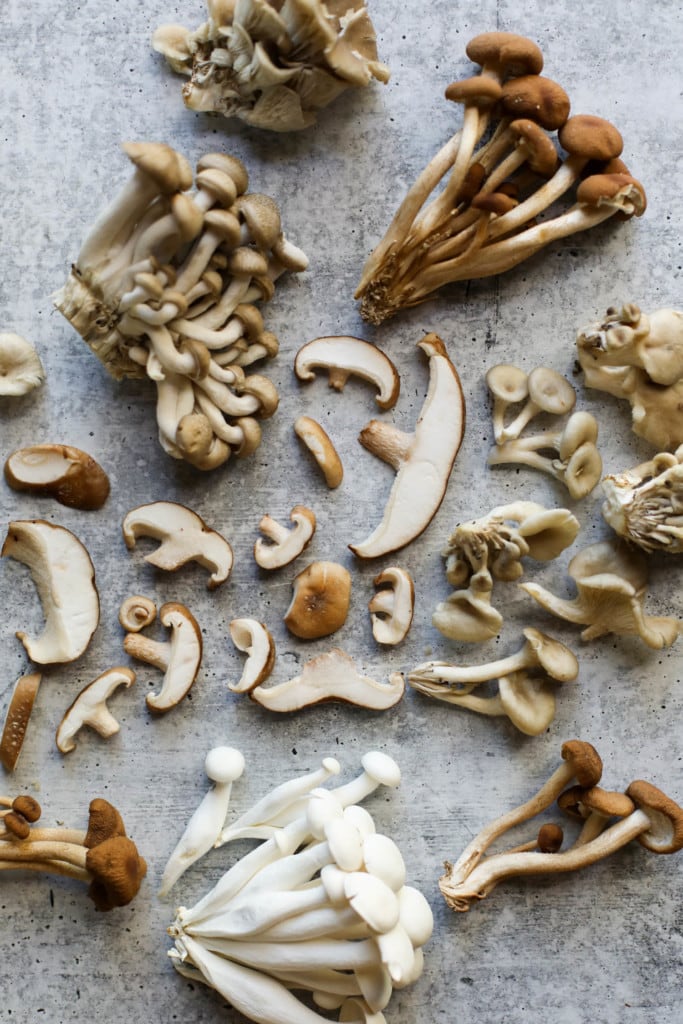
Standard Whole30 vs Plant-Based Whole30
The two biggest differences in these two similar Whole30 programs are:
- The plant-based Whole30 program eliminates animal-based foods and fats. That means no beef, poultry, seafood, or butter, while putting an emphasis on eating whole-food plant-based protein sources and plant-based fats
- The plant-based Whole30 program allows beans and legumes. Whereas foods like black beans, edamame, and lentils are not allowed on the standard Whole30 program, these foods are allowed on the Plant-Based Whole30 as a source of good-for-you plant-based protein and fiber
10 Plant-Based Whole30 Recipes
The following 10 recipes are dinners and side dishes that are compatible with the Plant Based Whole30 Program. Enjoy these Whole 30 vegetarian recipes.
Sheet-Pan Veggie Shawarma with Tahini Dressing
Inspired by the flavors of popular Mediterranean street food, you can serve this healthy veggie shawarma as is or over fresh greens, drizzled with a delicious lemon tahini dressing. To make this compatible with the Whole30 Plant-Based program, simply eliminate the small amount of maple syrup in the dressing.
Sheet Pan | 40 Minutes | Gluten Free | Vegan | Plant-Based Whole30
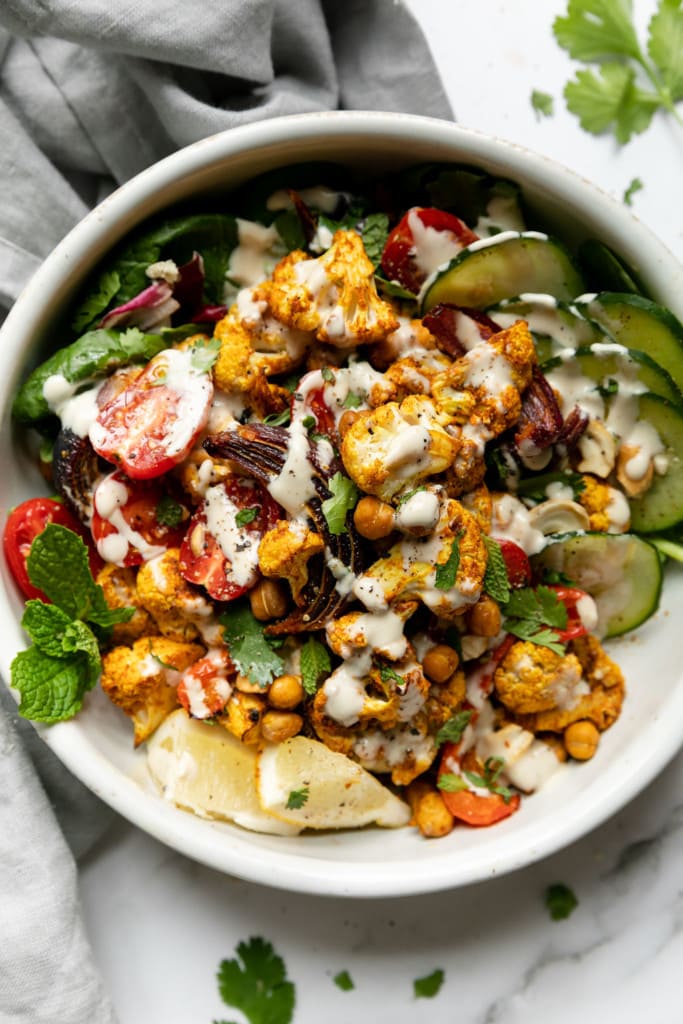
Vegan Cauliflower Mac and Cheese
This innovative recipe features a creamy sauce made from carrots and potatoes plus nutritional yeast, non-dairy milk, and spices. Mix it with tender cauliflower and a delicious ‘breadcrumb’ topping made from almond flour and spices. It all comes together for a Plant-Based Whole30-friendly mac and cheese that the whole family will enjoy together.
Stovetop-Oven | 1 Hour | Gluten Free | Vegan | Plant-Based Whole30
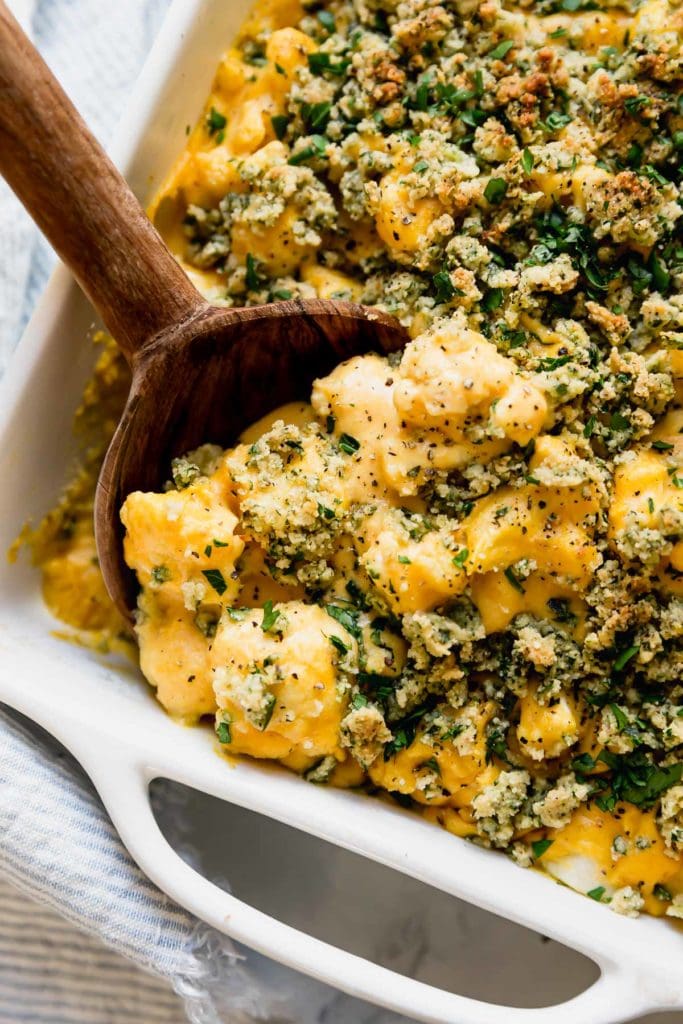
Green Chile Stew with Beans
Made easily in the slower cooker with a base of delicious Great Northern beans, plus salsa verde, potatoes, and lime-forward flavor. This Vegan Green Chile Stew with Beans is a cozy recipe you’ll enjoy while doing the Plant-Based Whole30 program. Top hearty bowls with ample avocado, jalapeño, and cilantro.
Slow Cooker | 4 hours (high) or 8 hours (low) | Vegan | Plant-Based Whole30
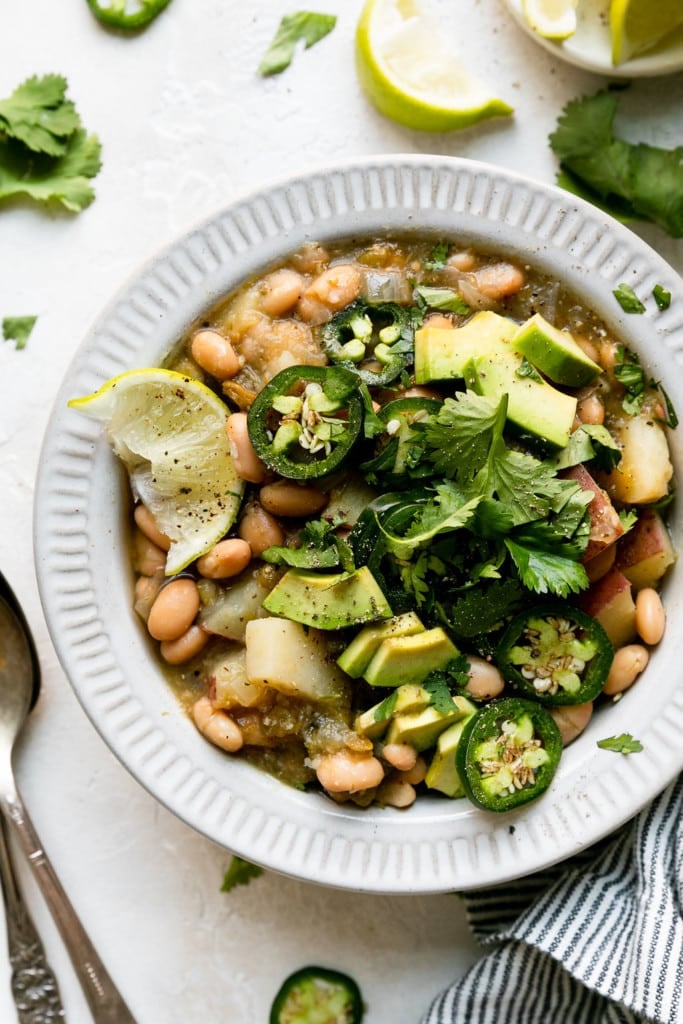
Lentil Shepherd’s Pie
You can never go wrong with a casserole that gets topped with creamy mashed potatoes. But what’s below the surface of this Vegan Shepherd’s Pie is just as special as the topping. A tender and flavorful lentil gravy loaded with veggies awaits you there. To make this plant-based recipe compatible with the Whole 30 Vegetarian Program, simply use arrowroot powder or tapioca starch instead of cornstarch to thicken the filling.
Stovetop-Oven | 1 Hr, 30 Minutes | GlutenFree | Vegan | Plant-Based Whole30
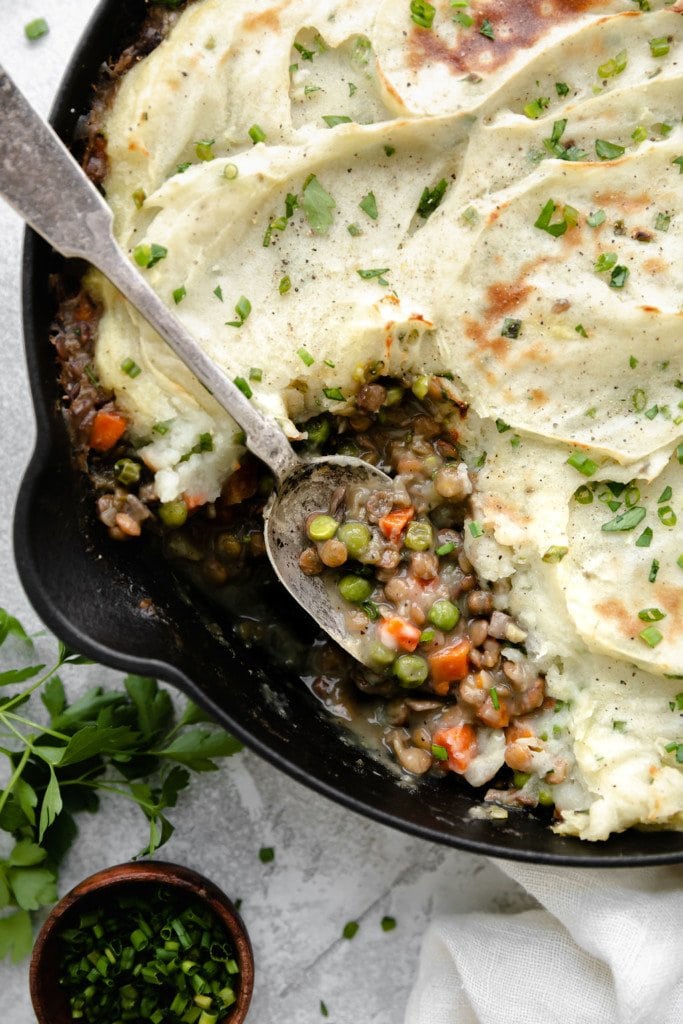
Vegan Alfredo Sauce over Roasted Veggies
Though you won’t be serving this creamy 100% plant-based alfredo sauce over standard pasta while doing the Plant-Based Whole30 program, you will absolutely LOVE it served over roasted veggies, zoodles, or strands of cooked spaghetti squash. Made from a base of cashews, nutritional yeast, and lemon juice, this creamy sauce is just the thing to provide a nutritious comfort dish you’re craving.
No-Cook | 35 Minutes | Gluten Free | Vegan | Plant-Based Whole30
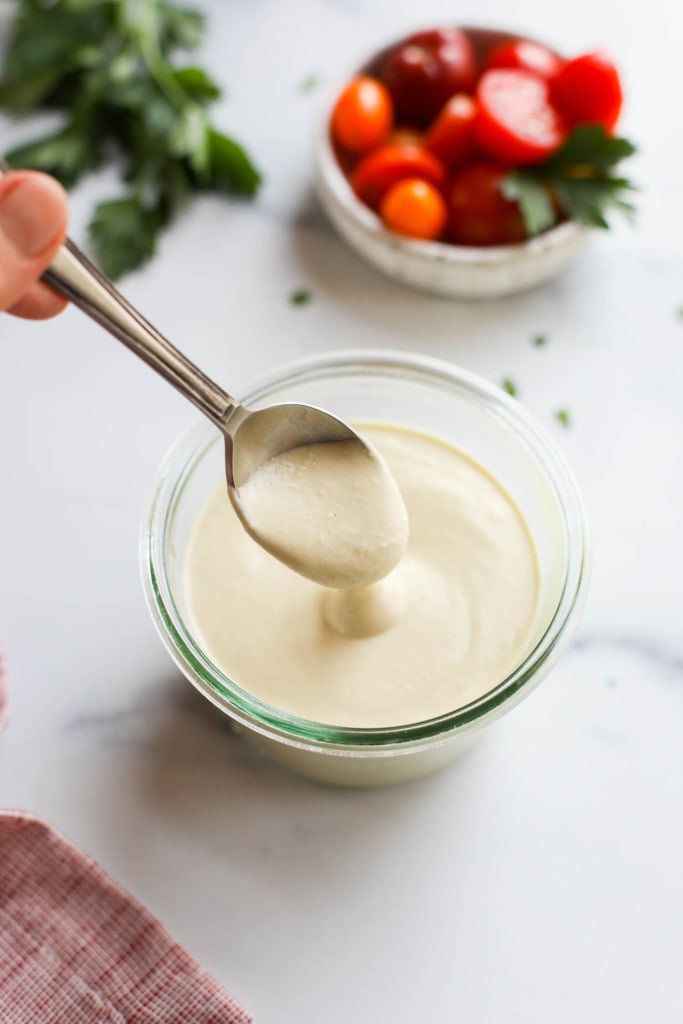
Slow Cooker Vegan Chili with Lentils
You may be craving a bowl of hearty beefy chili while doing the Plant-Based Whole30 program, but not to worry. This satisfying vegan chili made with lentils is thick, delicious, and full of comforting flavors. Plus, it provides 11 grams of plant-based protein and 9 grams of heart-smart fiber per bowl.
Slow Cooker | 4 hours (high) or 8 hours (low) | Vegan | Plant-Based Whole30
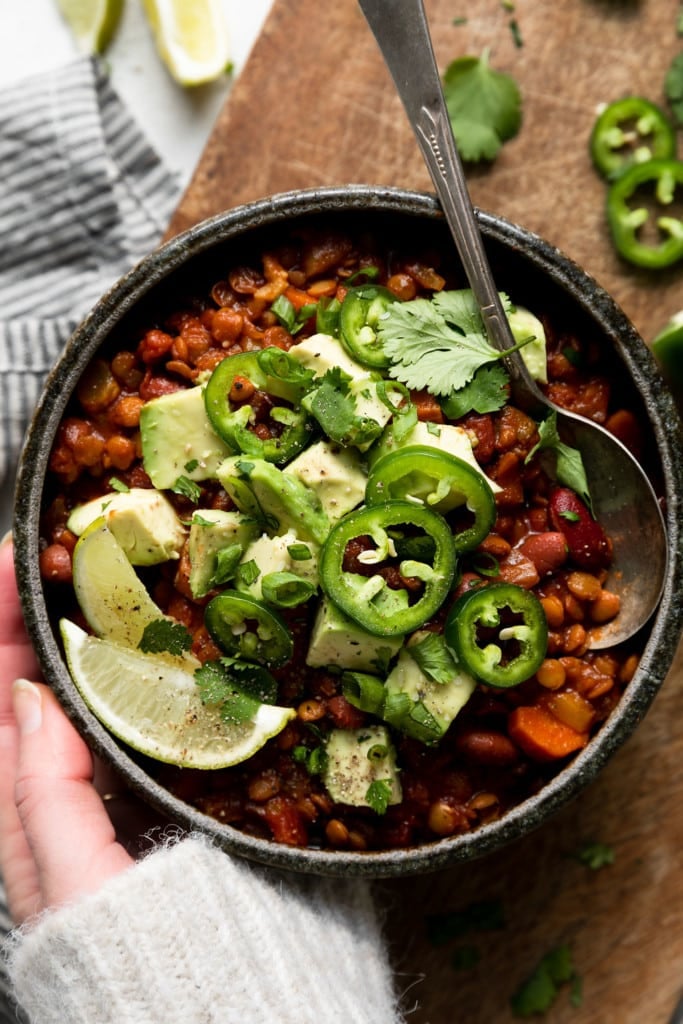
Cauliflower Buffalo Bites
When you just want wings, make these crispy, delicious, plant-based Buffalo Bites made from Cauliflower. Make them with a Whole30-friendly Buffalo Sauce (Note: use coconut oil or olive oil in place of the ghee in the sauce). Dip them in a dairy-free, egg-free ranch, such as this Dairy-free Ranch made with a vegan mayonnaise. Or this purchased vegan ranch.
Sheet Pan | 30 Minutes | Gluten Free | Dairy Free | Plant-Based Whole30
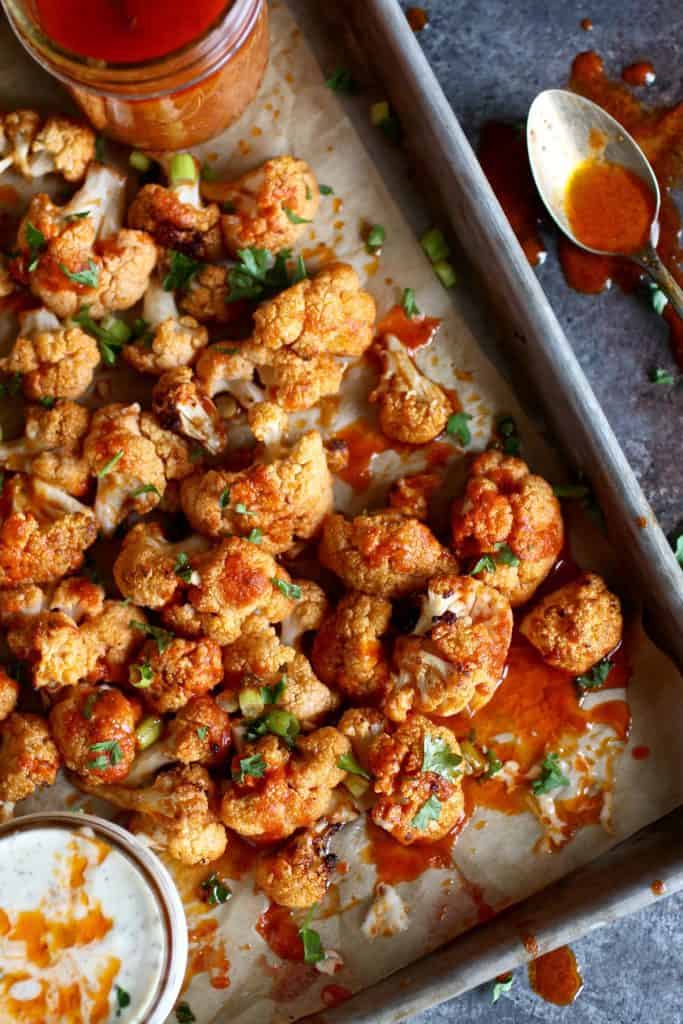
Garlic Roasted Radishes
Fresh radishes in shades of pinks, reds, whites, and purples are a beautiful and welcoming sign of spring. This recipe for Garlic Roasted Radishes is one of our favorite ways to serve this often forgotten vegetable. And we’re quite sure it will ignite your tastebuds while doing the Plant-Based Whole30 program. Just use coconut oil or olive oil instead of butter and serve with a vegan ranch, if desired.
Oven Baked | 25 Minutes | Gluten Free | Vegan | Plant-Based Whole30
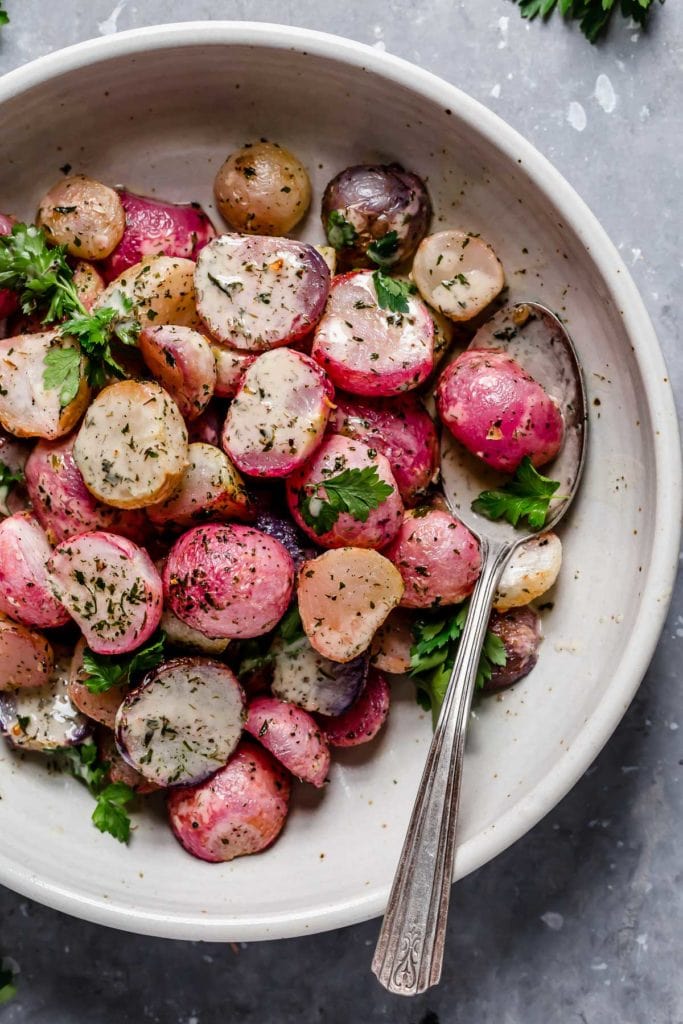
Easy Fried Plantains
Fried plantains are an unexpectedly delicious side dish with their crispy exterior and soft, creamy insides. Try them as a side dish instead of sweet potatoes or add to a salad for a dose of healthy carbohydrates. Choose plantains that are yellow with black spots if you want them on the sweeter side, or choose yellow to light green plantains for a more savory option.
Stovetop | 20 Minutes | Gluten Free | Vegan | Plant-Based Whole30
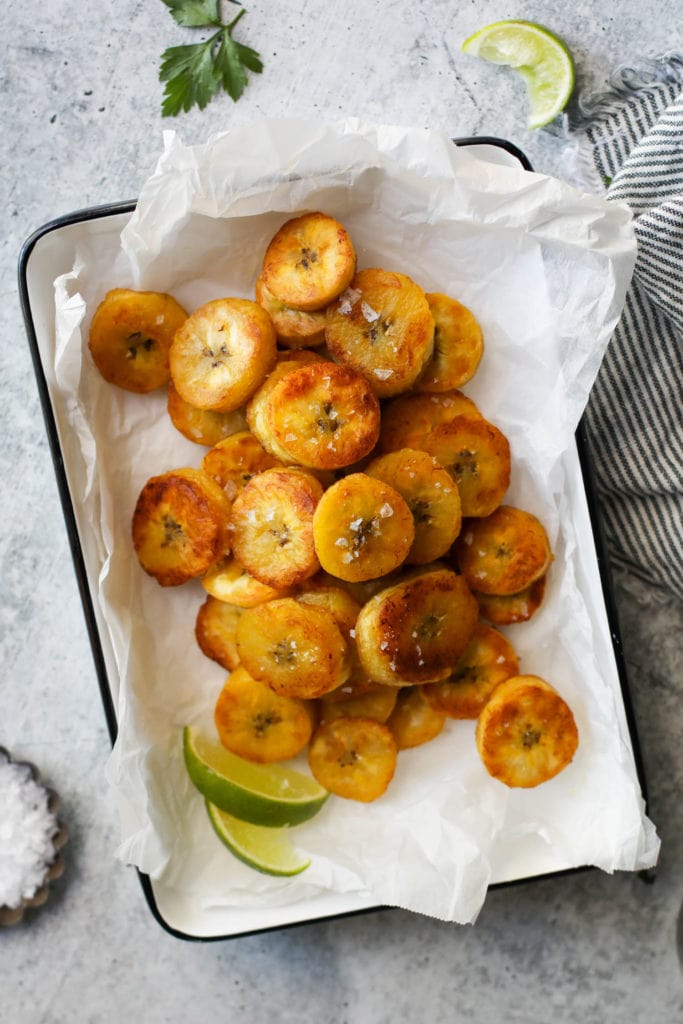
Air Fryer Brussels Sprouts
Crispy on the outside, tender on the inside, this no-fail recipe for Brussels sprouts in the air fryer is good every time. Serve them as an appetizer or side dish with our easy-to-make chipotle-lime aioli sauce. To make the sauce compatible with Plant-Based Whole30, use vegan mayonnaise, such as Sir Kensington’s or Primal Kitchen Vegan Mayonnaise.
Air Fryer | 25 Minutes | Gluten Free | Vegan | Plant-Based Whole30
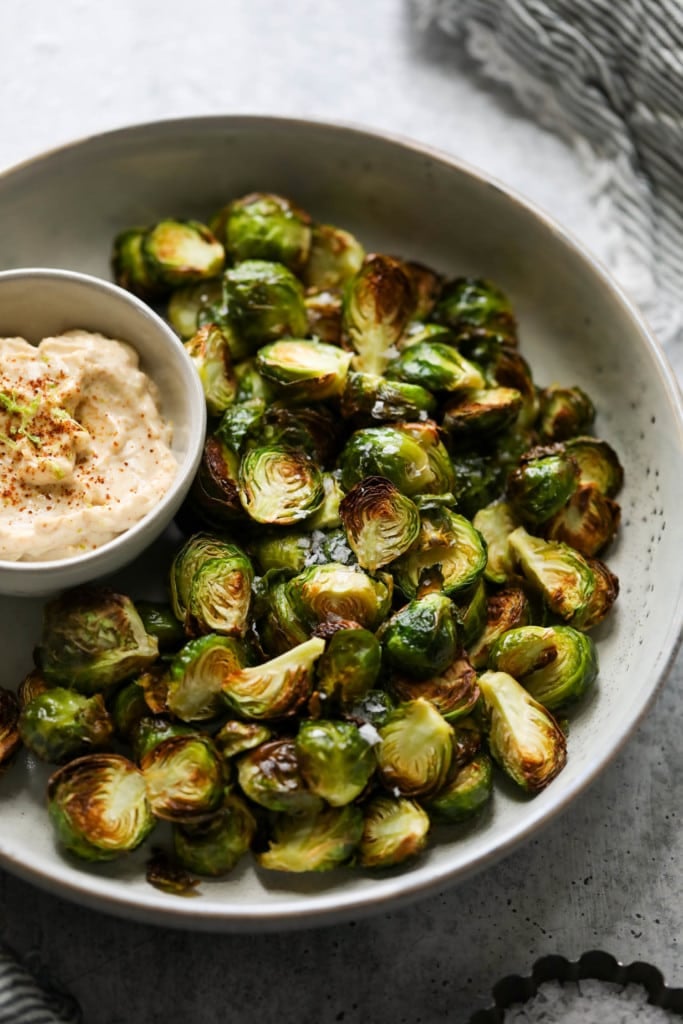
Pin It Now to Make These Recipes Later!
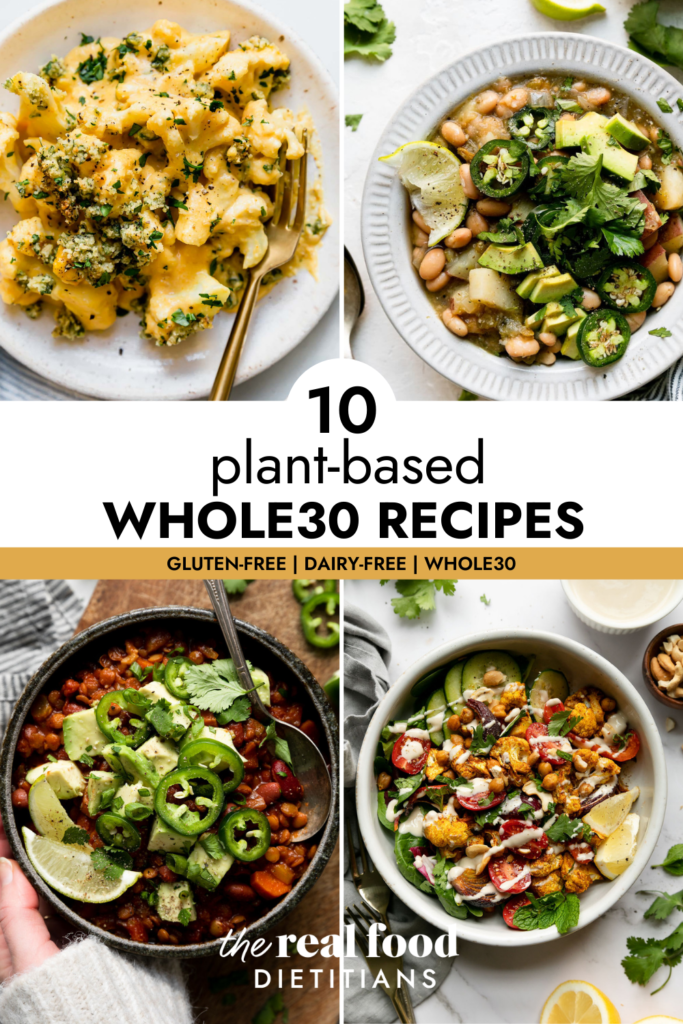
All photos and content are copyright protected. Please do not use our photos without prior written permission. If you wish to republish a recipe, please rewrite the recipe in your own unique words. Link back to the source recipe here on The Real Food Dietitians. Thank you!
